The ocean is filled with unique and fascinating marine species, but none quite as remarkable as the Flying Gurnard.
This fish may not be able to fly through the air like a bird, but it has a special adaptation that allows it to glide through the water in a way that no other fish can.
Contents
The Flying Gurnard is a bottom-dwelling fish that can be found in coastal waters around the world.
With its striking appearance and distinctive behavior, this creature is a true wonder of the undersea world.
Key Takeaways:
- The Flying Gurnard is a unique and fascinating marine species
- Its gliding behavior sets it apart from other fish species
- The Flying Gurnard’s adaptations allow it to thrive in its marine environment
- Conservation efforts are needed to protect this remarkable sea creature
What is a Flying Gurnard?
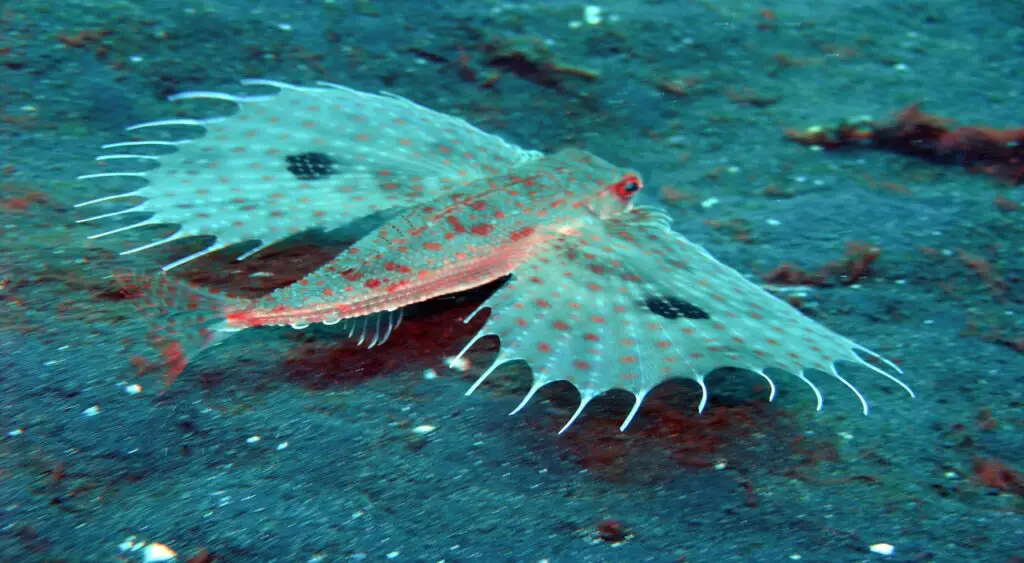
The Flying Gurnard is a unique and fascinating bottom-dwelling marine fish species that is known for its distinct gliding behavior, which sets it apart from other fish species.
The scientific name of the Flying Gurnard is Dactylopterus volitans, and it belongs to the family Dactylopteridae.
The Flying Gurnard can be found in the coastal waters of the Atlantic, Indian and Pacific Oceans.
They are typically found in shallow areas close to the shore, and can often be found in the sandy and rocky seabed.
The Flying Gurnard has a colorful appearance with a reddish-brown and blue body, which helps it blend into its underwater environment and avoid predators.
The Flying Gurnard has a unique set of pectoral fins that look like wings, and they use these fins to glide through the water.
When swimming, the Flying Gurnard flaps its pectoral fins to move forward, and when it wants to glide, it spreads its fins out.
This motion allows it to stay airborne and glide through the water for a short period of time. The Flying Gurnard is mainly carnivorous, and its diet consists of small fish, crustaceans, and mollusks.
They are also preyed upon by larger fish species, such as the grouper and barracuda.
Despite its unique features and abilities, the Flying Gurnard is not widely studied, and there is still much to learn about this fascinating species.
Its distinct characteristics and important role in the coastal ecosystem make it a truly remarkable marine creature.
A Colorful Appearance Underwater

One of the most striking and captivating features of the Flying Gurnard is its colorful appearance underwater.
This unique fish boasts a distinctive combination of bright oranges, yellows, and blues, making it stand out amongst the drab greens and browns of its underwater surroundings.
But what purpose does this colorful appearance serve?
Underwater experts suggest that the Flying Gurnard’s vibrant hues help it blend in with the brightly colored corals and rocks of its habitat, providing camouflage from potential predators.
In addition, its “eyebrow” stripes, which are black and white, mimic the eyes of larger predatory fish, deterring them from attacking the Flying Gurnard.
To truly appreciate the Flying Gurnard’s colorful display, take a look at this image:
“The Flying Gurnard’s vibrant hues help it blend in with the brightly colored corals and rocks of its habitat, providing camouflage from potential predators.”
The Unique Wings of the Flying Gurnard
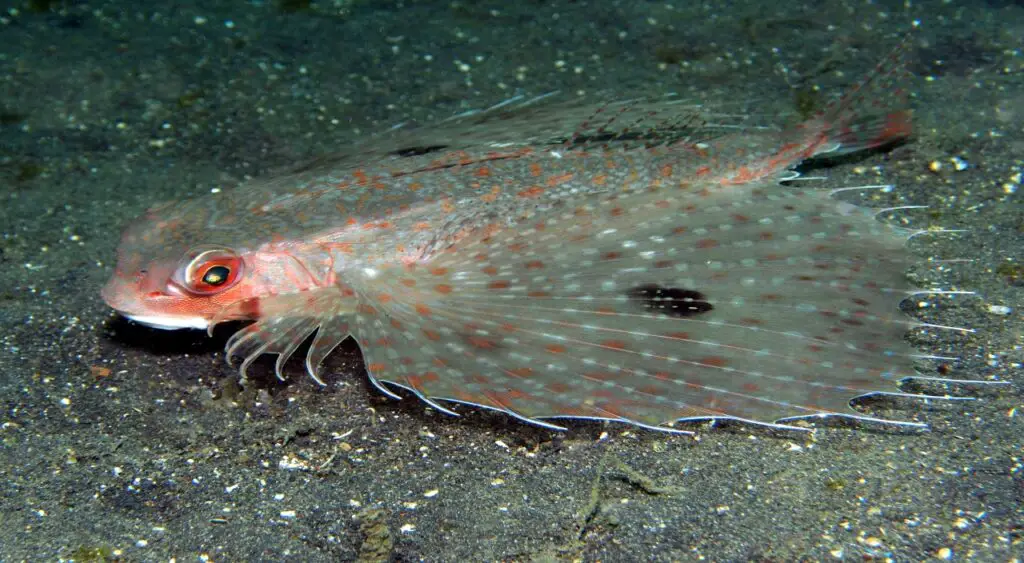
The Flying Gurnard’s remarkable ability to glide through the water is attributed to its wing-like fins that resemble a bird’s wingspan.
These fins, which are also known as pectoral fins, are large and fan-shaped, providing the Flying Gurnard with tremendous surface area to generate lift and decrease drag.
The wing-like fins are supported by bony struts that extend from the fish’s shoulder bones and help provide stability during flight.
The Flying Gurnard’s gliding behavior is a remarkable adaptation to its coastal habitat and is used to cover long distances while conserving energy.
It is believed that the Flying Gurnard flaps its pectoral fins while gliding to maintain lift and maneuvering through the water.
Similarly to how a bird flaps its wings to maintain lift during flight. The aerial qualities of the Flying Gurnard are essential to its survival.
As it uses its wing-like fins not only for gliding but also to slow its descent to the ocean floor and to intimidate its prey or potential predators.
When threatened, the Flying Gurnard will expand and display its pectoral fins, making itself appear larger and more menacing.
“The pectoral fins of the Flying Gurnard are a unique adaptation that allows it to glide through the water, cover long distances, and intimidate predators when threatened.”
Habitat and Distribution
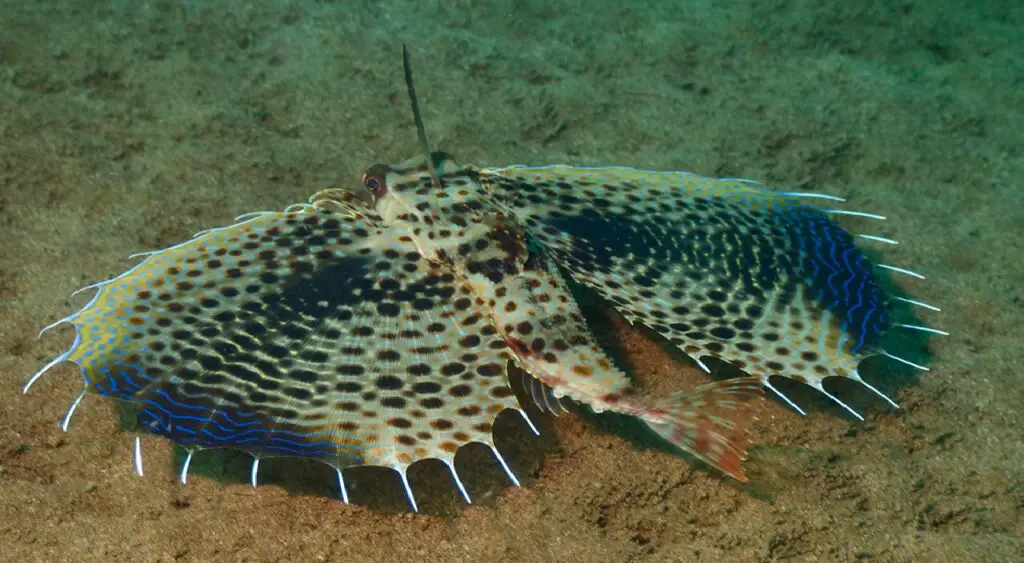
The Flying Gurnard is a unique marine creature that can be found in coastal waters throughout the world.
Its habitat includes shallow reefs, rocky areas, and sandy bottoms, where it can bury itself to hide from predators.
This fascinating fish is commonly found in the Atlantic and Indo-Pacific Oceans, including the Caribbean Sea and the Gulf of Mexico, and it is part of the coastal fauna that thrives in these regions.
Although the Flying Gurnard is not considered a commercial species, it is an important part of the marine life in its habitat.
It feeds on small invertebrates and fish, while serving as prey for larger predators such as sharks and groupers.
The distribution of the Flying Gurnard is mainly influenced by water temperature, which affects its reproduction and growth.
This species has a limited range due to its specific habitat requirements, and it is vulnerable to human activities such as overfishing and habitat destruction.
Coastal Ecosystem
“The Flying Gurnard is an important member of the coastal ecosystem, as it plays a crucial role in the food chain and contributes to the overall biodiversity of the region.”
Understanding the habitat and distribution of the Flying Gurnard is vital for the conservation of this unique marine creature.
By protecting its habitat and limiting human impact on coastal ecosystems.
We can ensure that the Flying Gurnard and other marine creatures continue to thrive for generations to come.
Adaptations and Survival Strategies
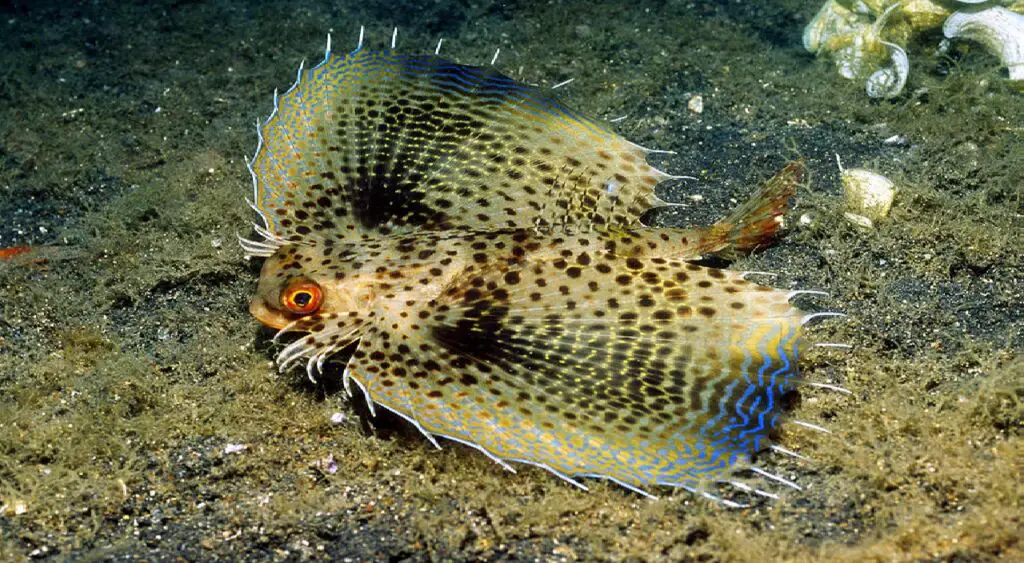
The Flying Gurnard stands out from other marine wildlife because of its unique adaptations and survival strategies.
These adaptations enable it to thrive in its undersea world, where it faces numerous challenges.
Flying Gurnard adaptations:
The Flying Gurnard has various adaptations that allow it to live peacefully in its marine habitat.
One of these adaptations is the presence of bony plates on its body, which offer protection against predators.
These plates also make it more rigid, which contributes to its ability to glide through coastal waters.
The Flying Gurnard also has a unique swimming technique that allows it to move quickly and easily through the water.
By using its wing-like fins, the Flying Gurnard can glide through the water like a bird in flight.
This technique enables the fish to cover long distances with minimal effort, making it an efficient predator and swimmer.
Survival strategies:
The Flying Gurnard has developed several strategies to ensure its survival in the undersea world. One of these strategies is its ability to camouflage itself to blend in with its surroundings.
The Flying Gurnard’s colorful appearance and patterns help it to blend in with the ocean floor, making it harder for predators to spot it.
The Flying Gurnard also has a unique behavior that allows it to scare away potential predators.
When threatened, the Flying Gurnard flares out its wing-like fins, making itself look more significant and intimidating to predators.
This behavior can often scare off smaller predators, providing the Flying Gurnard with an opportunity to escape danger.
Comparison Table:
| Flying Gurnard Adaptations | Survival Strategies |
|---|---|
| Bony plates on its body for protection | Camouflage to blend in with surroundings |
| Wing-like fins for efficient swimming | Intimidation behavior to scare away predators |
Interactions with Prey and Predators
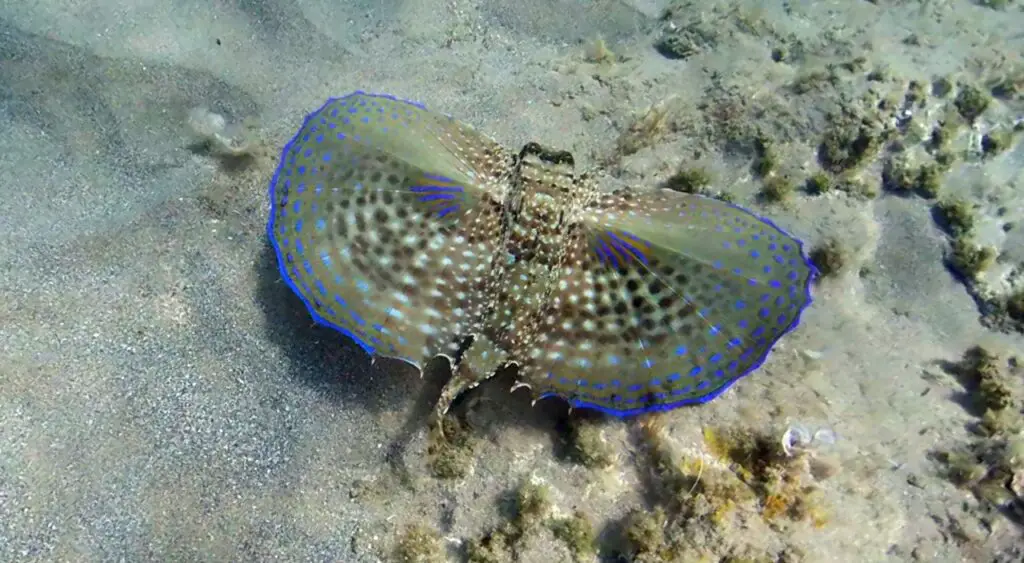
The Flying Gurnard is a unique predator and prey in the ocean ecosystem.
As a predator, the Flying Gurnard feeds on small fish and crustaceans, including shrimp, crab, and even smaller Flying Gurnards.
With its wing-like fins, the Flying Gurnard is an efficient hunter, able to swoop down and catch its prey with precision.
However, the Flying Gurnard is also vulnerable to larger predators, such as sharks and barracudas.
When threatened, the Flying Gurnard will use its gliding behavior to escape their predators by quickly swimming away or gliding through the water.
“The Flying Gurnard’s unique ability to glide through the water makes it a formidable predator and enables it to quickly escape from danger.”
Being a prey and predator in the ocean, the Flying Gurnard plays a crucial role in maintaining the balance of marine creatures.
It is a vital link in the food chain, and its presence in the ocean is essential to the survival of many other marine species.
Unveiling the Flying Gurnard’s Life Cycle
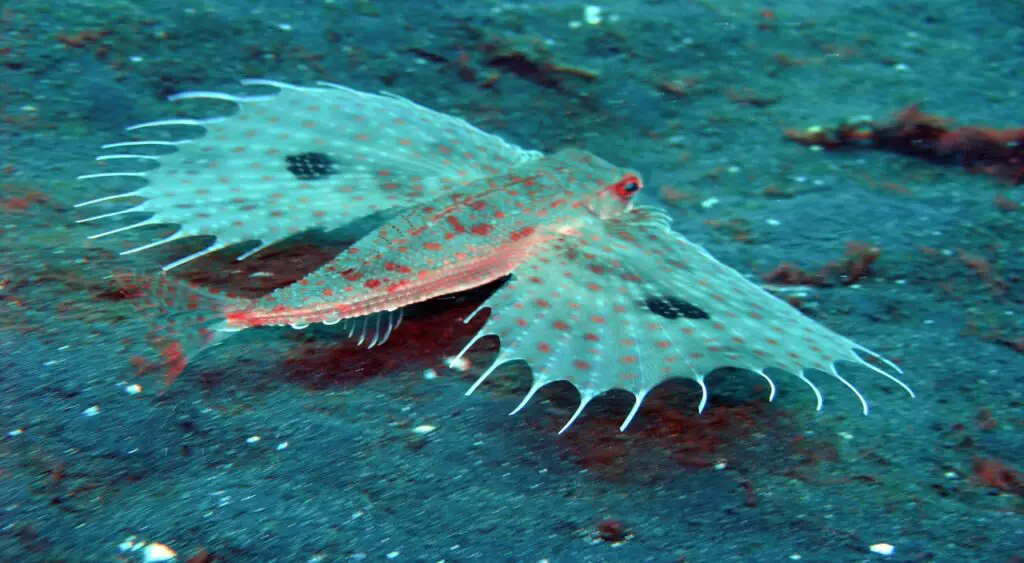
The Flying Gurnard’s life cycle is a fascinating process that takes place in the undersea world, where marine wildlife thrives.
At the initial stage, the Flying Gurnard lays its eggs on the ocean floor, which are then fertilized by the male.
The eggs are surrounded by a jelly-like substance that helps to protect them from predators. The eggs hatch after a period of ten days, and the newly hatched young ones are called larvae.
During the larval stage, the Flying Gurnard begins to develop its distinctive wing-like fins, which are instrumental to its survival.
The larvae remain close to the ocean floor, feeding on small crustaceans and other tiny marine creatures.
As the Flying Gurnard grows, it becomes a juvenile and starts to venture out into open water. Here, it uses its wing-like fins to glide through the water column and escape from predators.
After several years, the juvenile Flying Gurnard reaches sexual maturity and begins the reproduction process, starting the cycle anew.
Although the Flying Gurnard’s life cycle is not extensively studied.
Researchers believe that the species can live up to 5 years in the wild and that its life cycle plays a significant role in the marine ecosystem.
“The Flying Gurnard’s life cycle is a fascinating process that takes place in the undersea world, where marine wildlife thrives.”
Conservation and Threats
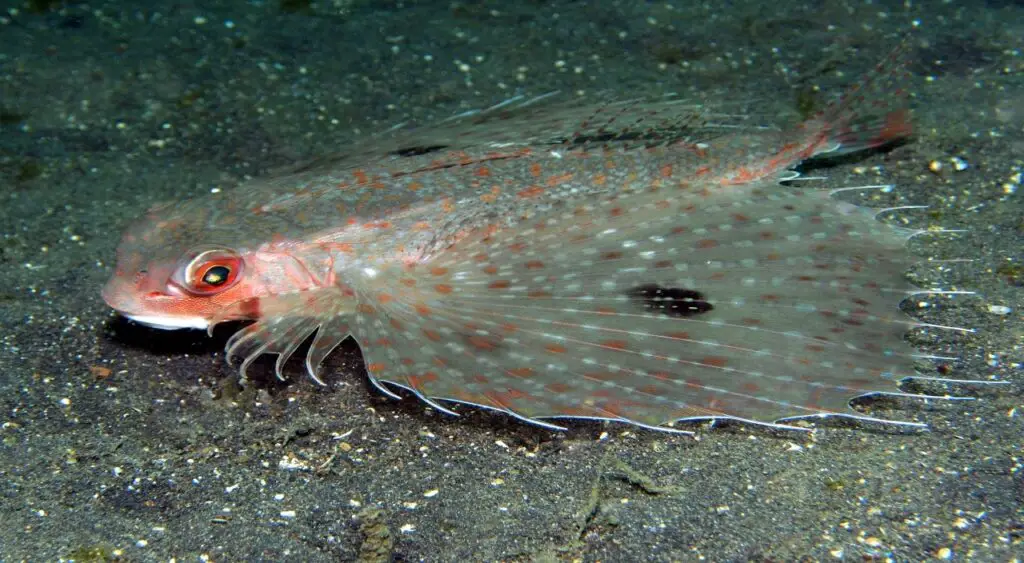
Conclusion
The Flying Gurnard is truly a unique and fascinating marine species. Its wing-like fins, gliding behavior, and colorful appearance make it stand out among other coastal fauna.
As a bottom-dweller, this creature has developed unique adaptations and survival strategies to thrive in its undersea world.
However, like many marine creatures, the Flying Gurnard is facing conservation challenges and potential threats to its habitat.
It is important to raise awareness about the significance of this species in the marine ecosystem and protect its place in the ocean.
In conclusion, the Flying Gurnard is the ocean’s hidden superhero.
Its aerial qualities and interactions with other marine creatures make it an important part of the undersea world.
We must continue to learn about and protect this unique fish and its habitat to ensure the health and well-being of ocean life.
FAQ
1. What is a Flying Gurnard?
The Flying Gurnard is a unique marine species that dwells at the bottom of the ocean. It is known for its distinctive gliding behavior, which sets it apart from other fish species.
2. Why is the Flying Gurnard’s appearance so colorful?
The vibrant coloration of the Flying Gurnard serves as a camouflage technique, helping it blend into its underwater environment and evade potential predators.
3. How do the wing-like fins of the Flying Gurnard contribute to its aerial qualities?
The wing-like fins of the Flying Gurnard enable it to glide through coastal waters with remarkable agility. These fins enable it to navigate and move effortlessly in its marine habitat.
4. Where can the Flying Gurnard be found?
Flying Gurnards can be found in various oceanic regions, particularly in coastal areas. They play a crucial role in the marine ecosystem as part of the coastal fauna.
5. What are the unique adaptations of the Flying Gurnard?
The Flying Gurnard possesses several adaptations that allow it to thrive in its marine environment. These include its colorful appearance, wing-like fins, and other survival strategies.
6. How does the Flying Gurnard interact with other marine species?
The Flying Gurnard interacts with other marine species both as a predator and as prey. It plays a significant role in the underwater food chain and contributes to the balance of the marine ecosystem.
7. What is the life cycle of the Flying Gurnard?
The Flying Gurnard goes through various stages of reproduction and growth, exhibiting interesting behaviors related to its life cycle. Understanding its life cycle helps in understanding its overall biology.
8. What threats does the Flying Gurnard face?
The Flying Gurnard, like many marine creatures, faces potential threats to its habitat and survival. Conservation efforts are crucial in protecting this unique sea creature and preserving the ocean life.
- 5 Best Aquarium Lamp You Can Buy Now
- Aquarium 120 Liters | The Best Fish and Plant Options
- 10 Fascinating Facts About Aquarium Jellyfish You Didn’t Know
- Aquarium Aesthetic | The Art Of Aquarium Design
- Top 10 Aquarium Stand for Every Budget and Style
- 5 Compelling Reasons Why Fish Farming is Essential







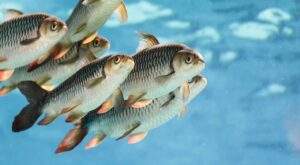
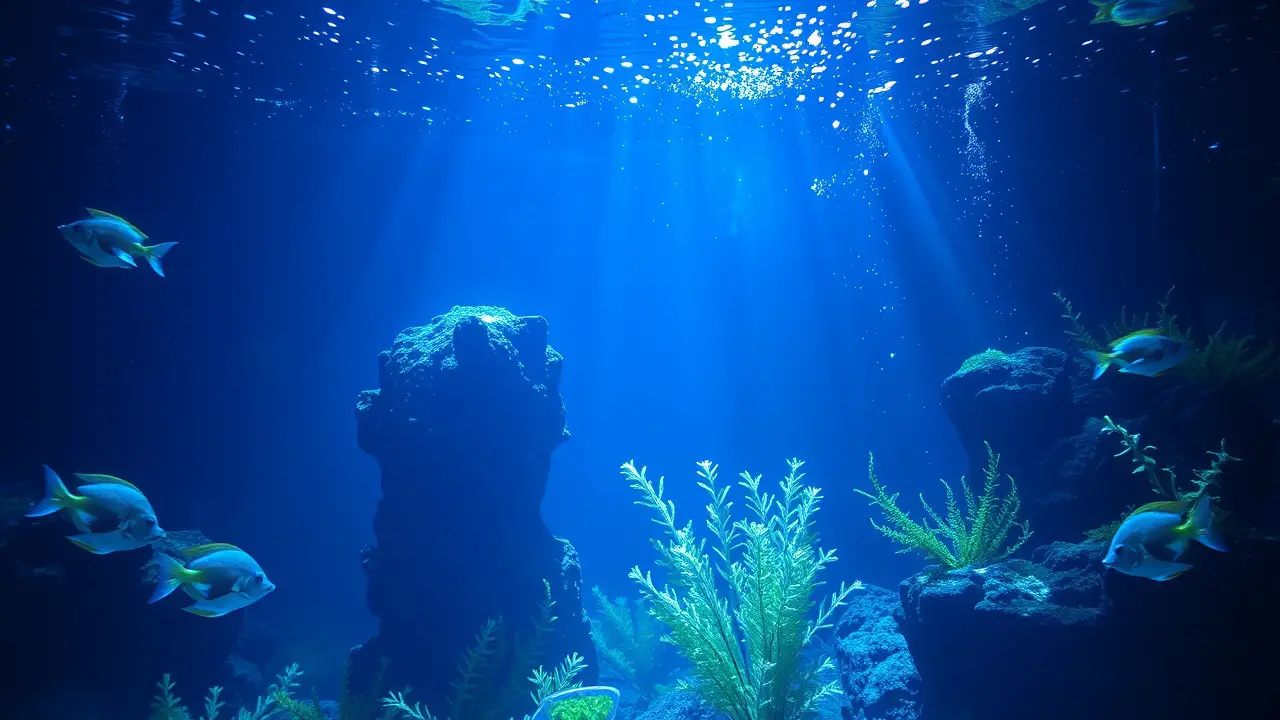
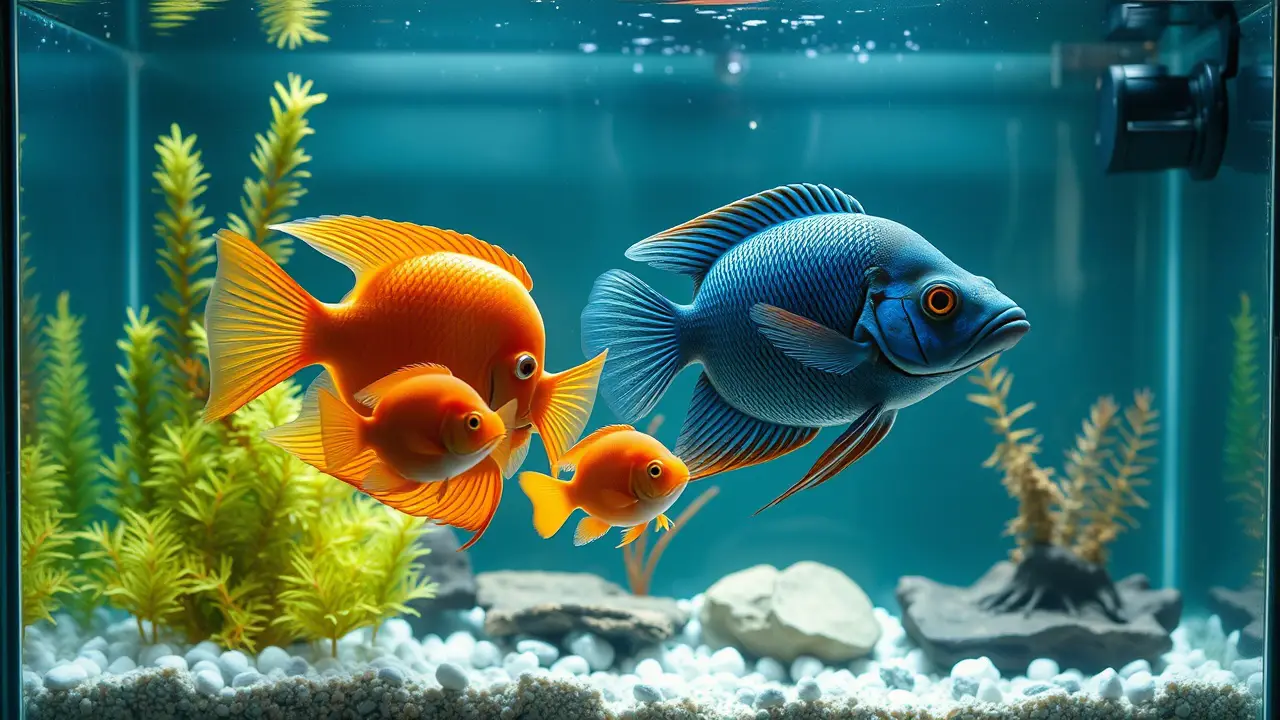

Leave a Reply